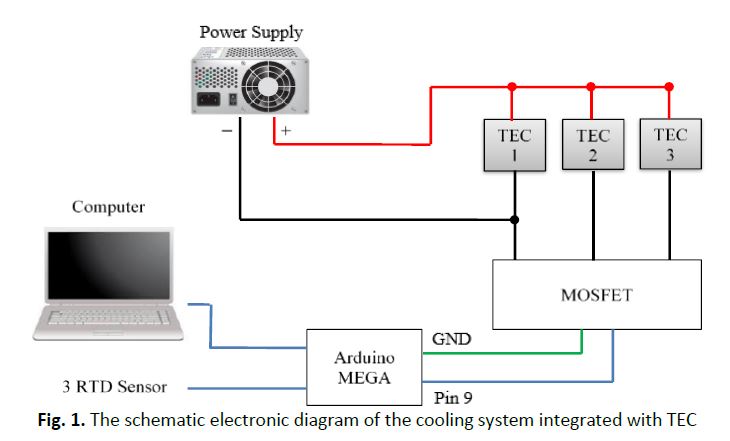Identification of ARX Model for Thermoelectric Cooling on Glass Windows
DOI:
https://doi.org/10.37934/arfmts.96.2.144157Keywords:
Thermoelectric, ARX, glass windows, cooling, modellingAbstract
Thermoelectric cooling (TEC) is a solid-state heat pump that uses the Peltier effect to dissipate the heat generated by the electronic packaging system. TECs are widely used in aerospace, military, scientific work and industry due to small size, lack of moving parts, and ease of integration. In this study, a cooling system integrated with TEC is developed in a testing area (lecturer’s office) with the aim to reduce the temperature of the hot glass window area due to solar radiation that passes through it. This cooling system used direct TEC, for keeping the cooling temperature on the window to about 26 °C which is equivalent to an air conditioning setting temperature of 26 °C set during the experiment. This work includes experimental and modelling studies conducted on cooling systems integrated with TEC. The main target of this study is to develop a dynamic model of a cooling system integrated with TEC. The black box modelling approach in producing a mathematical model was selected based on the ARX model that corresponds to the actual dynamic state of the cooling system. The best model was finalized based on the best match on curve patterns when comparing the real and estimated models using the system identification tools in MATLAB, and also had the least error. The accuracy of the models was compared and analysed. The results showed that the 4th order of the ARX model produced a higher best fitting and standard deviation values of 78.14% and 0.030769. This system accuracy is almost within the acceptable range for most error calculations in the validation method. In addition, the ARX model is found incapable of achieving the highest fitting due to the losses from the dynamic environment and losses from the TEC itself. Still, the use of this black box model used in this study is a significant variation where system parameters can be identified even offline.
Downloads

































